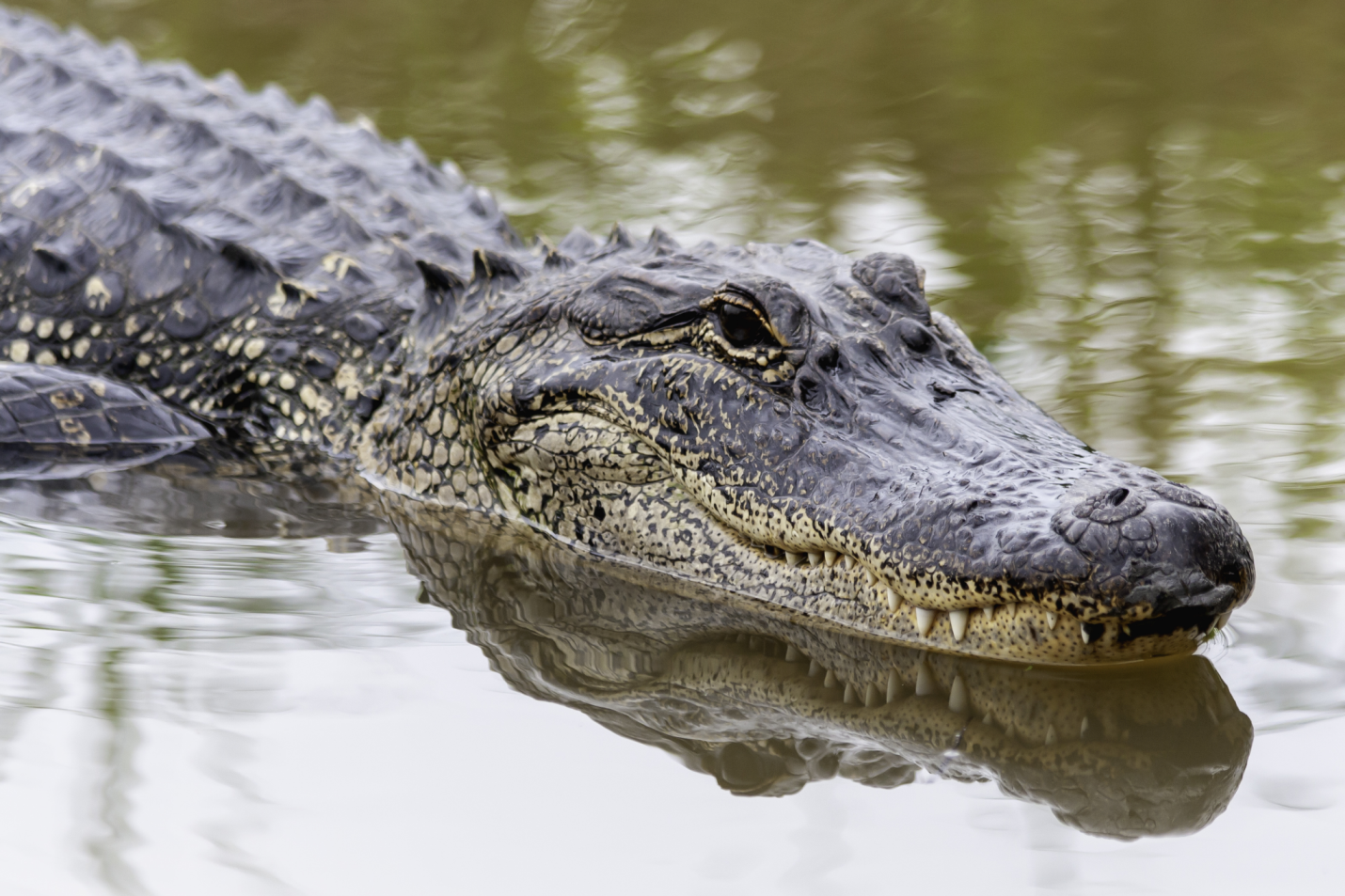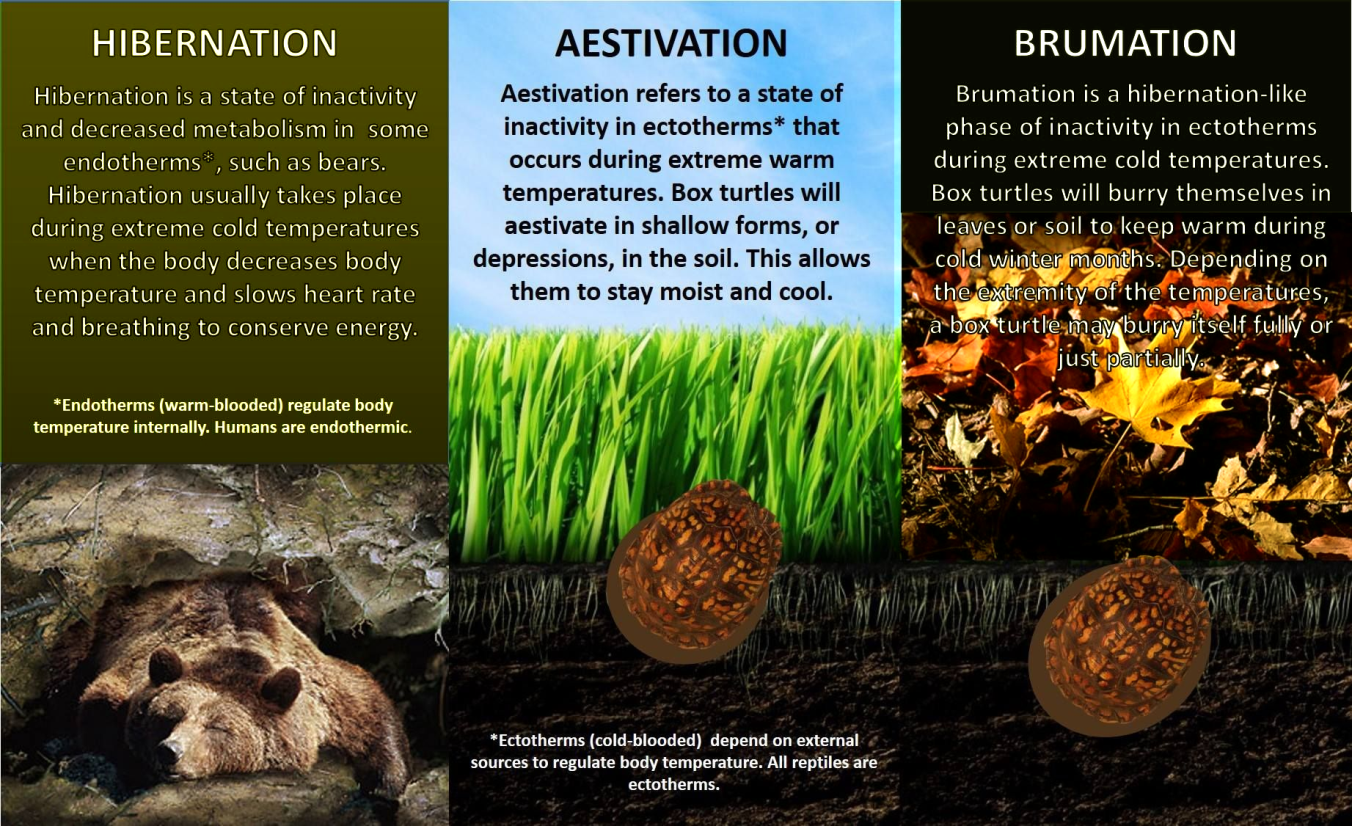Description

Copyright infringement not intended
Picture Courtesy: https://www.newsweek.com/alligator-lured-residential-pond-raw-chicken-trap-1634092
Context: Reptiles adapt to colder months through brumation, a period of reduced activity and metabolism aimed at conserving energy and resources.
About Brumation
- Brumation is a term used to describe a state of dormancy or slowed metabolic activity observed in certain ectothermic (cold-blooded) animals, particularly reptiles, during colder months. It is a survival strategy to cope with adverse environmental conditions, such as low temperatures and reduced food availability.
- Reptiles are the primary group of animals that undergo brumation. This includes various species of snakes, turtles, lizards, and even some amphibians. These animals rely on external heat sources to regulate their body temperature.
Physiological Changes During Brumation
- Metabolic Rate: One of the hallmark features of brumation is a significant reduction in metabolic rate. This is an energy-saving mechanism to cope with decreased food intake and lower external temperatures.
- Heart Rate and Respiration: Animals in brumation experience a notable decrease in heart rate and respiration. This further contributes to energy conservation.
- Body Temperature: Unlike warm-blooded animals, reptiles don't maintain a constant internal body temperature. During brumation, their body temperature drops to be in sync with the cooler external environment.
Behavioural Changes
- Activity Reduction: Brumating animals become lethargic and less active. Movement is minimized to conserve energy.
- Feeding and Digestion: Many animals undergoing brumation reduce or cease feeding altogether. Digestive processes slow down, and the need for food decreases.
- Reproductive Suppression: Brumation is often associated with a suppression of reproductive activities. This is advantageous because raising offspring requires significant energy.

Environmental Cues and Triggers
- Temperature: The primary trigger for brumation is a drop in temperature. As the external environment cools, ectothermic animals receive cues to enter a state of dormancy.
- Day Length: Changes in day length, specifically a decrease in daylight hours, can also influence the initiation of brumation.
Selection of Sheltered Locations
- Animals preparing for brumation seek out sheltered locations. This can include burrows, rock crevices, or other secure hiding spots to protect them from extreme temperatures and predators.
Duration of Brumation
- The duration of brumation varies among species and is influenced by factors such as geographic location and climate conditions. Some animals may brumate for a few weeks, while others may remain dormant for several months.
Preparation and Emergence
- Before entering brumation, animals often go through a period of reduced food intake. This is followed by finding a suitable location for dormancy.
- As temperatures begin to rise in spring or with the onset of more favourable conditions, animals gradually emerge from brumation. This period is crucial for them to resume normal activities.
Conclusion
- Brumation is a complex biological phenomenon involving physiological and behavioural adaptations in response to environmental cues. It serves as a crucial survival strategy for certain cold-blooded animals to endure challenging conditions and ensure their long-term well-being.

|
PRACTICE QUESTION
Q. What is the primary benefit of brumation for reptiles?
A. Increased reproductive activity
B. Enhanced foraging abilities
C. Conservation of energy and resource minimization
D. Improved social interactions
Answer: C
Explanation:
Brumation in reptiles is a period of dormancy or slowed activity, primarily occurring during colder months when temperatures drop, and food becomes scarce. The primary benefit of brumation is the conservation of energy and the minimization of resource requirements.
|













